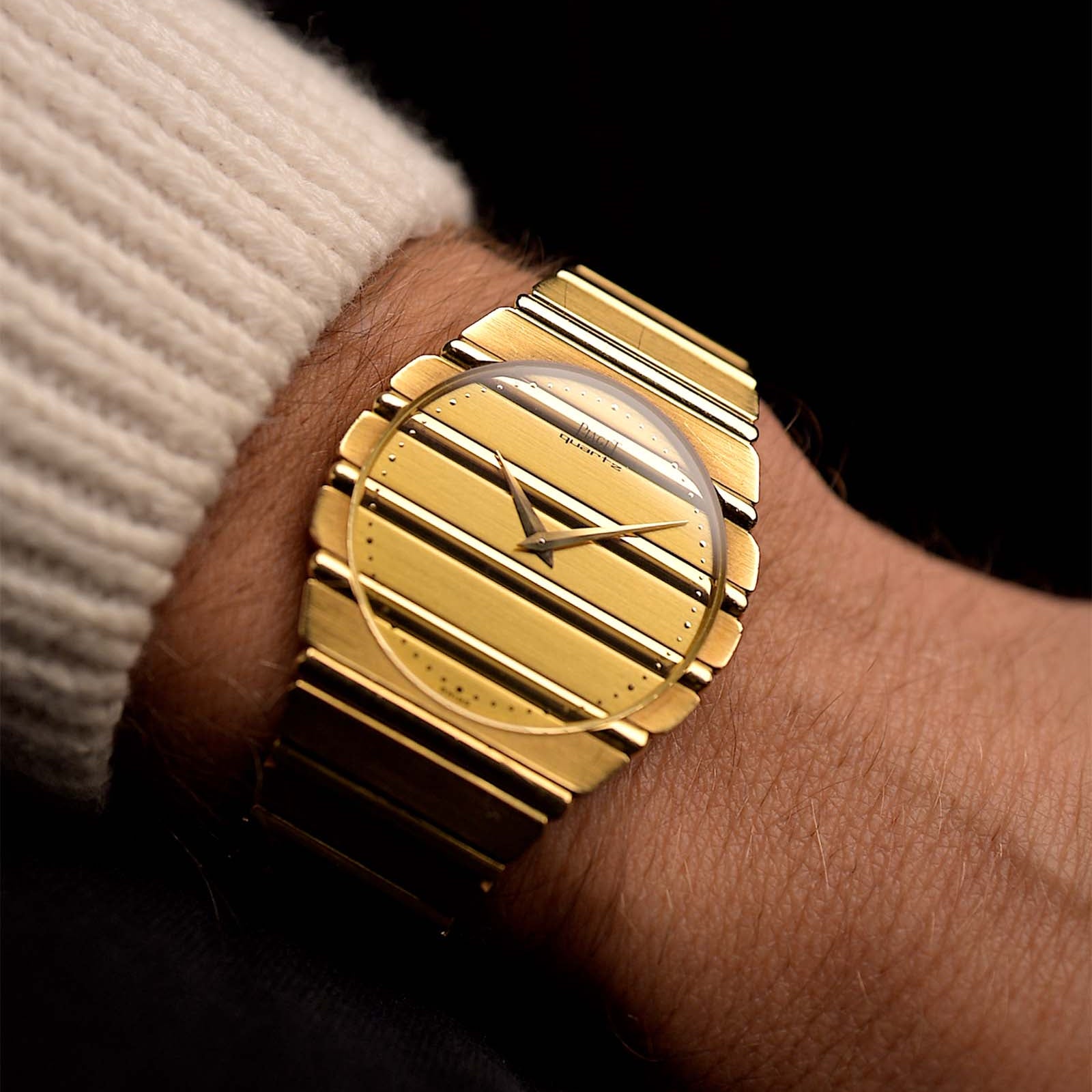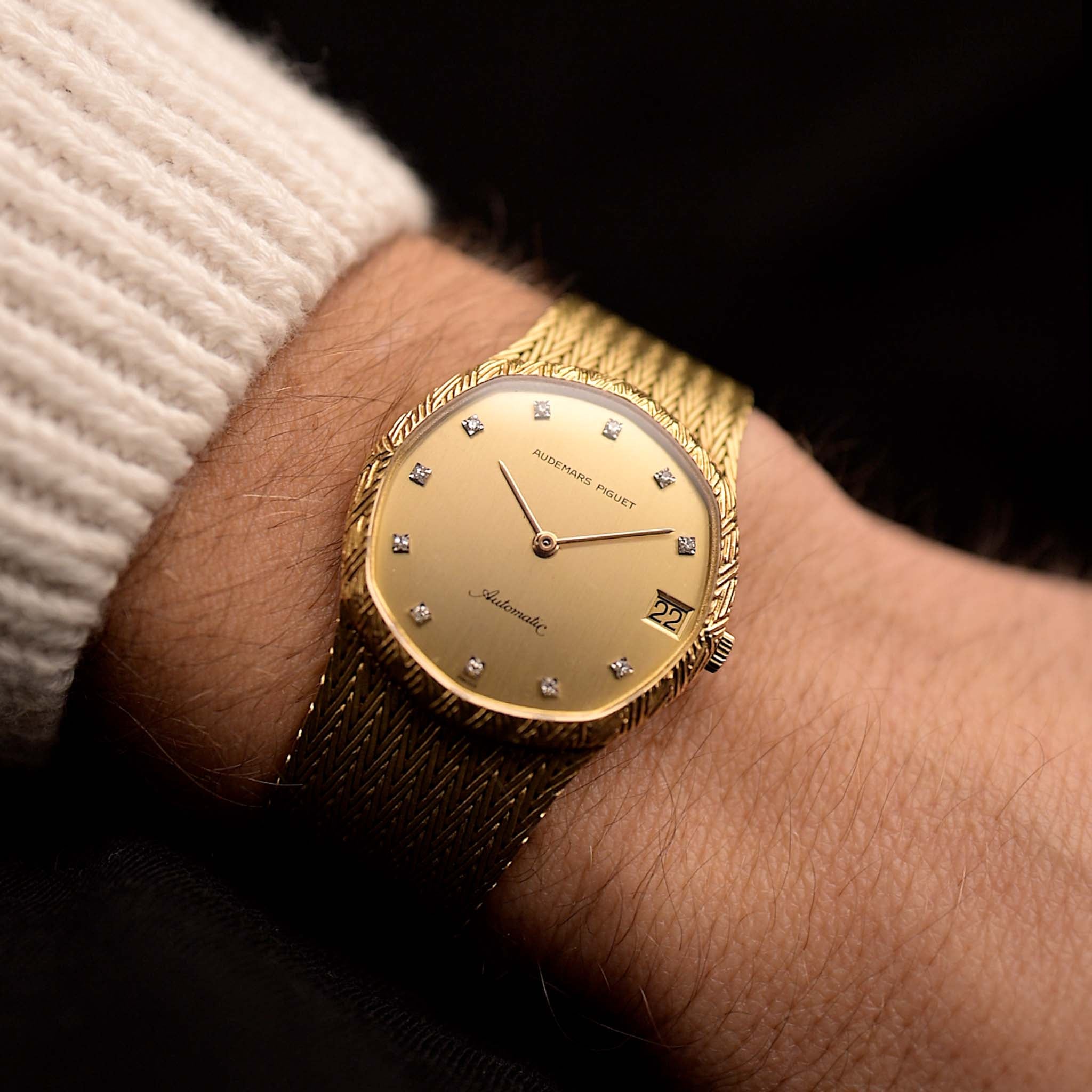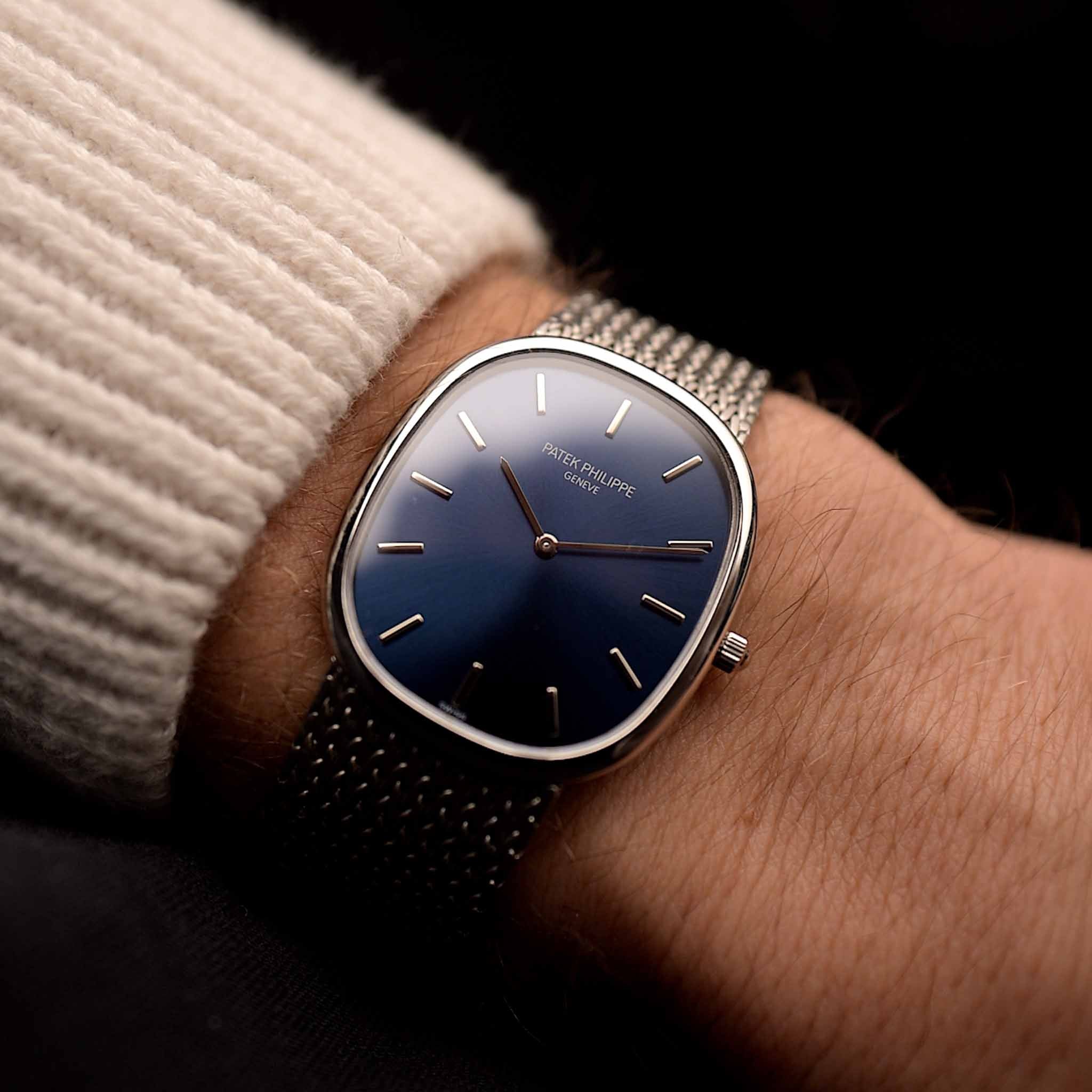This is another episode of Horological Myth Busters. It's seems generally accepted that Gerald Genta is the spiritual father of the Disco Volante. However, what if the part he played was only in improving but not conceiving this design? The Disco Volante archetype sums together a variety of rare, unusual and cool timepieces over a watchmaking era starting in 1930s Artdeco and spanning over at least 50 years. It's an evolution, a development combining several influences, people, crafts and manufacturers. And all this to compose the perfect symmetrical watch experience, all to make the watch more than a simple device to tell the time.
November 15, 2023
Vacheron Constantin, Omega and the Design Origins of the Disco Volante

Marcus Siems @siemswatches
Collector, Author, Data Analyst
It's seems generally accepted that Gerald Genta - The Watch Designer - is the spiritual father of the watch that would become known to enthusiasts and collectors alike as the "Disco Volante".
 The Disco Volante - aka the Audemars Piguet ref. 5093 - designed by Gerald Genta but also conceived? Photo Courtesy of Alexandre @thewatcham.
The Disco Volante - aka the Audemars Piguet ref. 5093 - designed by Gerald Genta but also conceived? Photo Courtesy of Alexandre @thewatcham.
Envisioned in collaboration with Audemars Piguet and case maker Eggly & Cie. Genta came up with the reference 5093 in 1953[1-4]. The design comprised a perfectly round case, integrated strap with screwed case-back, the ultra-thin caliber 2003 (a Jaeger-LeCoultre ebauche) and visually most defining a relatively small dial but broad and intricately finished bezel... Hence, Disco Volante - or Flying Saucer in English. It might not sound poetic but it definitely does look like it!
Dramatic Introduction! Three examples of Flying Saucer watches inspired by Gerald Genta's work and the people that came before him. A video by Felix Goldammer.
This particular design went down in history as one of the most influential early works of Gerald Genta and was a cornerstone for his opus in La Brassus. Yet, how unique is the design to Genta and Audemars Piguet? It is quite 1930s Artdeco in its vision and execution. So may it be possible to trace the origin of the ref. 5093 even further back?
Well, to make a long story short there have been quite similar blueprints by (among others) Vacheron Constantin and Omega* - both first appearing roughly around the mid- to late 1930s.
 Two blueprints of Disco Volante designs originating already in the late 1930s, most likely in 1937. An excerpt from the Omega archives (ref. CK2013, left) and an advertorial from Vacheron Constantin (right). Photos Courtesy of Omega & HIFI Archiv.
Two blueprints of Disco Volante designs originating already in the late 1930s, most likely in 1937. An excerpt from the Omega archives (ref. CK2013, left) and an advertorial from Vacheron Constantin (right). Photos Courtesy of Omega & HIFI Archiv.
1) Omega's Grande Disco Volante
The first late 1930s reference we can track down is Omega's CK2013, a 39mm behemoth of a flying saucer. They come in various dial configurations and - similar to the AP ref. 5093 16 years later - display hidden lugs.
 Four different examples of Omega's ref. CK2013 grande (39mm) "Disco Volante". Photos Courtesy of Pandolfini, Shuck The Oyster, Hodinkee & Sotheby's.
Four different examples of Omega's ref. CK2013 grande (39mm) "Disco Volante". Photos Courtesy of Pandolfini, Shuck The Oyster, Hodinkee & Sotheby's.
All these examples have the stepped bezel on a stainless steel case in common as well as the manually wound caliber 25.6 SOB. These dials appear to come with numerals and often featured a two-tone sector layout. The crown is recessed. Most examples I identified displayed serial numbers in the 8.5 to 9.5Mio. range (most prominently 8.5-8.7Mio.) attributing the pieces to the late 1930s and early 1940s.
 A detailed view of the hidden lugs and case architecture as well as the movement (left) and the stepped bezel and recessed crown (right). Photos Courtesy of Shuck The Oyster.
A detailed view of the hidden lugs and case architecture as well as the movement (left) and the stepped bezel and recessed crown (right). Photos Courtesy of Shuck The Oyster.
2) Vacheron Constantin's Piccolo Disco Volante
Interestingly, Vacheron Constantin appears to have launched a remarkably similar design to Omega as well in the mid- to late 1930s. These fine gentlemen's pieces could however be described as the polar opposite of Omega's execution. A smaller piece (30mm) in precious metals, partially gemset with beautifully finished bezels... "The Prince" as it is also nicknamed at times[5] is the elegant counter example to Omega and the spiritual parent to the AP ref. 5093.
 Four examples of Vacheron Constantin Disco Volante pieces from the mid- to late 1930s. Absolutely rare and mindblowingly beautiful. Photos Courtesy of Antiquorum, The Hour Lounge, & HIFI Archiv.
Four examples of Vacheron Constantin Disco Volante pieces from the mid- to late 1930s. Absolutely rare and mindblowingly beautiful. Photos Courtesy of Antiquorum, The Hour Lounge, & HIFI Archiv.
Vacheron's saucers come with a higher level of detail regarding the case and bezel design. Several concentric circles or recessed hour markers grace the opulent golden and platinum case structure[5]. Particularly variations with hour marker bezels show a intriguing similarity to another extroverted design of the mid-1940s: The Cartier Helm[6].
3) Disco Volante Variations Throughout the Years
If we assume the introduction of Audemars Piguet's ref. 5093 as a pivotal point in the heritage of the Disco Volante we can draw an interesting timeline of pieces that influenced the Genta design - thus came before - and others that were influenced.
 Evolution of the Disco Volante design from the late 1930s to the 1960s and 70s - Spanning over multiple brands from Omega, Vacheron Constantin, Audemars Piguet, Cartier, Universal Geneve & Patek Philippe. Photos Courtesy of Shuck The Oyster, The Hourlounge, John Goldberger & the Cartier Heritage Department, Alexandre @thewatcham, & the Goldammer Archives.
Evolution of the Disco Volante design from the late 1930s to the 1960s and 70s - Spanning over multiple brands from Omega, Vacheron Constantin, Audemars Piguet, Cartier, Universal Geneve & Patek Philippe. Photos Courtesy of Shuck The Oyster, The Hourlounge, John Goldberger & the Cartier Heritage Department, Alexandre @thewatcham, & the Goldammer Archives.
The evolution of the design, or better the idea, of the Disco Volante spans at least over roughly 50 years. The classic traits of the Flying Saucer - a case with hidden lugs and broad, decorated bezel and recessed crown - come together at several manufactures. And among others we can find them from Omega, Vacheron Constantin, Zenith, Longines, Cartier, Audemars Piguet, Patek Philippe, & Universal Geneve. And the list likely goes on.
4) Gerald Genta's Share in the Design
So if we're absolutely honest here, we must admit that Gerald Genta took an existing design and refined it. It's not exactly new yet several spins on the existing Disco Volante formula were introduced. His work was an evolution, another step in the process. Importantly, this doesn't make AP's ref. 5093 less striking, important or less Genta-esque. The case architecture and the small details bear his very unique signature and I will point those details out below:
 Several variations of the Audemars Piguet ref. 5093 (& 5090) "Disco Volante". Photo Courtesy of Stetz Co. Watches and the Audemars Piguet Archives.
Several variations of the Audemars Piguet ref. 5093 (& 5090) "Disco Volante". Photo Courtesy of Stetz Co. Watches and the Audemars Piguet Archives.
The first part being extending the on the bezel variations. You will find hobnail, guilloched or hammered finishing as well as diverse concentric arrangements or hour marker bezels... to name just a few.
The second important novelty that came with the ref. 5093 was the strap, or rather the way the strap was integrated into the case. Quite different to other hidden lug structures the strap was screwed into the caseback itself right under the bezel. This way it was possible to keep the case both small in diameter and thickness while keeping the watch almost perfectly symmetrical from almost every angle.
 Close up on the strap system and case-back of an Audemars Piguet ref. 5093 Disco Volante. Take a closer look at the three screws in the case-back. These hold the bezel in place under which the strap is screwed into the case-back. Photos Courtesy of Stetz Co. Watches.
Close up on the strap system and case-back of an Audemars Piguet ref. 5093 Disco Volante. Take a closer look at the three screws in the case-back. These hold the bezel in place under which the strap is screwed into the case-back. Photos Courtesy of Stetz Co. Watches.
Overall, Gerald Genta polished and improved the Disco Volante design... And similar to the lugs, the Genta factor isn't obvious at first glance. A feature several of his watches have in common is the holistic experience of the case, the dial and the strap/bracelet. The design may have existed for some 15-20 years but it is the combination of all these different facets together that make the Audemars Piguet ref. 5093 so clearly Genta. Nevertheless, we must call it as it is:
Gerald Genta is not the spiritual father of the Disco Volante. The part he played was to improve but not to conceive this design.
The Disco Volante archetype sums together a variety of rare, unusual and cool timepieces over a watchmaking era starting in 1930s Artdeco and spanning over at least 50 years. It's an evolution, a development combining several influences, people, crafts and manufacturers. And all this to compose the perfect symmetrical watch experience. All to make the watch more than a simple device to tell the time.
* You can find further 1930s examples coming from Longines and Zenith for example.
References
[1] A Deep Dive into Gerald Genta's Design Legacy; Marcus Siems, Goldammer Vintage Watches;
https://goldammer.me/blogs/articles/gerald-genta-design-legacy
[2] The History of Audemars Piguet Wristwatches - The Early Days Part II; Marcus Siems, Goldammer Vintage Watches;
https://goldammer.me/blogs/articles/history-audemars-piguet-slim-automatic
[3] The Unsung Audemars of Gerald Genta; Josh Rankin, WatchTime India;
https://www.watchtime.in/articles/featured/724/the-unsung-audemars-of-gerald-genta
[4] Gerald Genta, A Historical Interview; Constantin Stikas, Very Important Watches;
https://www.veryimportantwatches.com/el/articles/news/gerald_genta_a_historical_interview
[5] The Hour Lounge; Vacheron Constantin Heritage;
https://www.vacheron-constantin.com/gb/en/maison/heritage/the-hour-lounge.html
[6] Design Highlights - The Cartier "Helm"; Marcus Siems, Goldammer Vintage Watches;
https://goldammer.me/blogs/articles/design-history-cartier-helm
All rights on text and graphics reserved to the Author.




























1 comment
Buen artículo. Poseo un raro Rolex Ref. 3028, circa 1937, 18K oro rosa, Art Deco, Disco Volante, bisel con números esmaltados…
Leave a comment